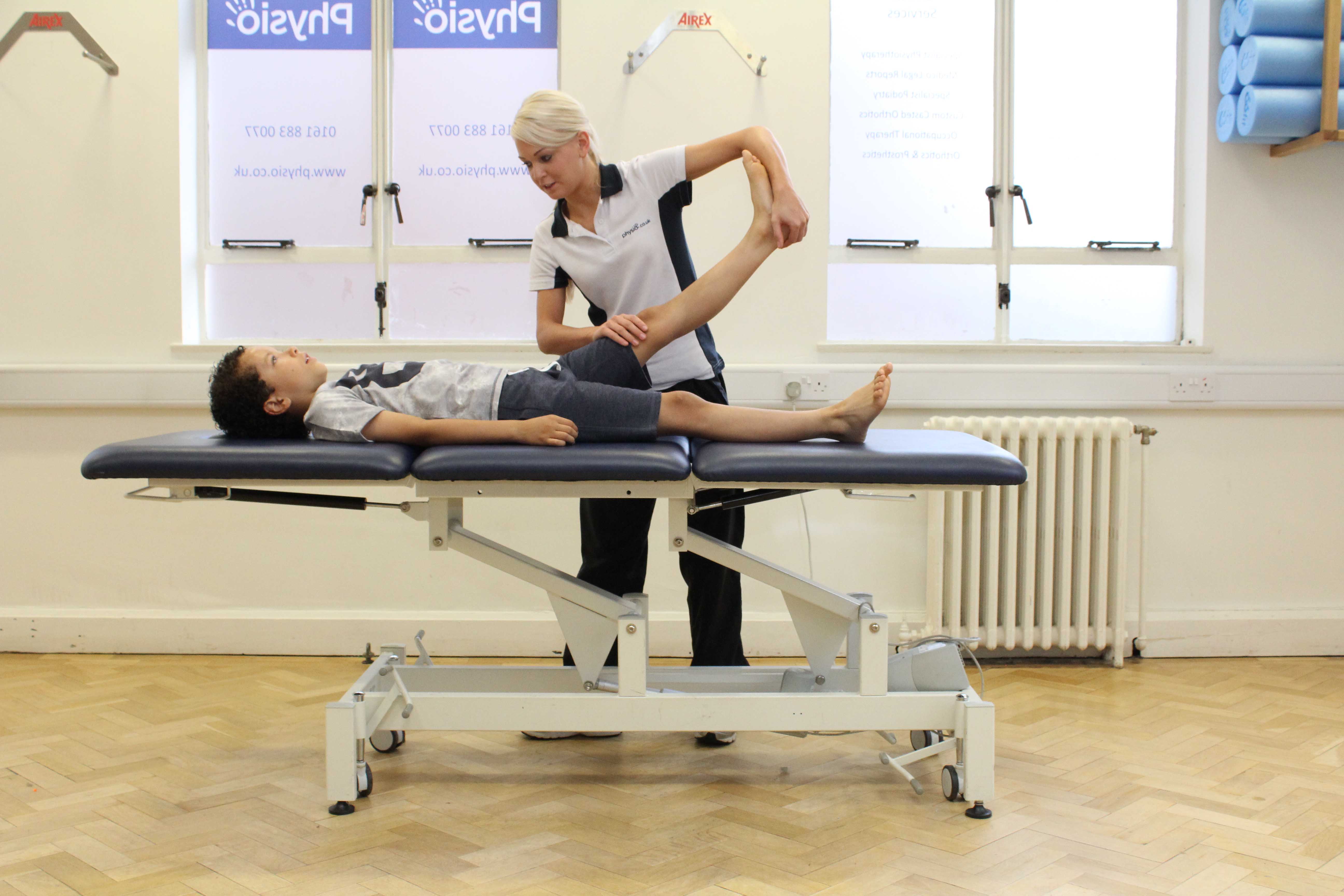 Above: Mobilisation and stretch exercises applied by a paediatric physiotherapist
Above: Mobilisation and stretch exercises applied by a paediatric physiotherapistConditions treated with Splinting
Splints can be provided to children with any condition causing reduced range of movement at a joint. For example, splints can be worn on the hand and wrist to prevent the formation of a claw-like hand and enable efficient maintenance of hygiene in the palm. They can also be worn on the foot and ankle to increase weight bearing and improve heel strike while walking. A specialist physiotherapist at Physio.co.uk will assess and determine if splinting is an appropriate treatment modality for your child.
Physiotherapy and Splinting
Your physiotherapist will carry out an in-depth neurological examination of your child’s symptoms, problems and goals in order to determine if splinting is an appropriate treatment intervention for your child. The assessment will involve measuring your child’s range of movement, muscle strength, tone, sensation, proprioception, co-ordination and checking their ability to carry out simple functional tasks. The findings of the assessment will be discussed with you and your physiotherapist will help you to weigh up the advantages and disadvantages of splinting your child.
If splinting is considered to be a useful treatment route for your child, it can be carried out in one of our clinic locations or at home. Your physiotherapist may provide a pre-fabricated splint or it may be appropriate to make one from a high standard mouldable material. Your physiotherapist will discuss how often your child should wear the splint in order to make maximum improvement.
It is important to note that splinting does not replace the need for physiotherapy treatment. It is a treatment intervention that is used alongside physiotherapy sessions. Physiotherapy treatment for a child with limited range of movement at the joints may focus on:
- Positioning – advice and charts
- Exercises – strengthening limbs and trunk
- Stretches – muscle mobilisations and joint capsule
- Massage
- Practice of functional activities – reaching, walking
- Weight bearing – through arms or legs
- Pain management
- Carer education
- Increased range of movement
- Increased mobility
- Improved posture and joint alignment
- Improved muscle tone
- Improved muscle imbalance
- Reduced muscle tightness and joint stiffness
- Reduced pain and discomfort
- Prevention or reduction of permanent deformity
- Reduced risk of falls and injury
Why Physio.co.uk for splinting
At Physio.co.uk, we understand that reduced range of movement can negatively impact on your child’s comfort, confidence, function and ability to move around. Our physiotherapists are specifically trained to deliver a high standard splinting service. Splinting is an evidence based treatment technique that can substantially improve range of movement and overall quality of life.
- Access to botulism toxin (botox) injections to increase effects of splinting
- Access to hydrotherapy to increase stretch in warm water
- Access to occupational therapy
- Provision of splinting regime and home exercise program
- Learn how to help your child achieve optimum quality of life
- No waiting lists
- Treatment at home or in the clinic
- Experienced specialist physiotherapists
- Treatment at any stage of your child’s development

 0330 088 7800
0330 088 7800

































